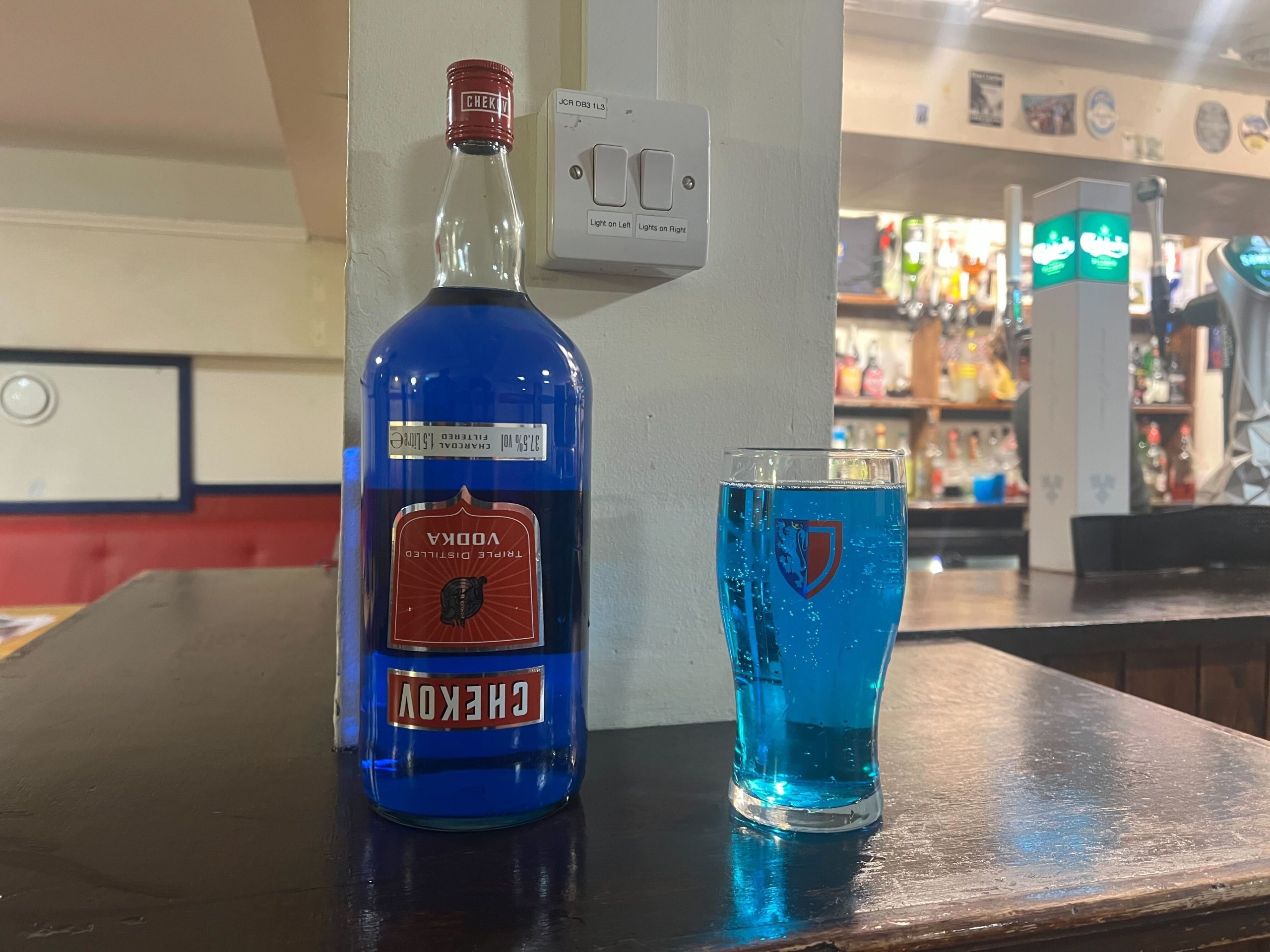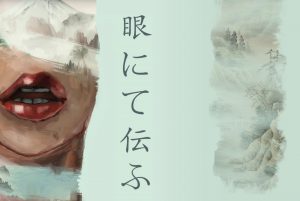Icon of the Week: Balliol Blue
by Myles Lowenberg | November 3, 2024

(They say journalism isn’t a lucrative industry, but it got me a rare Blue out of a pint glass.)
It’s been a good year for the Balliol Blue. The drink, which is in fact blue and found in Balliol, is made of one shot of blue curacao, one of peach schnapps, and two of vodka before being topped off with lemonade (usually diet, because Balliol cares about your health). The Blue is likely the most popular drink in Oxford, coming in a distinctive colour and served in a plastic cup, and some people seem to think it tastes good.
The Blue’s home is the Lindsay Bar—the official name for Balliol’s bar—which is unique for being wholly student-run. It’s one of the liveliest college bars in the university, underground and littered by Blues on every possible surface, not least the eternally sticky floor. Joe Whelan, a Balliol third year who manages the bar, said that they’ve sold over 7,000 Blues in 2024 so far, making the Blue by far the best-selling drink there. At £3.50 per drink, that means Blue sales alone have added roughly £24,500 to the GDP this year, which at this point is the last thing keeping the British economy from collapsing.
Around half of those 7,000 Blues were probably consumed by Yashas Ramakrishnan, a Balliol second year who reached #14 on the Cherwell BNOC list last year because of what the newspaper called his “Balliol Bar doormanship.” Unlike Joe, he does not actually do anything for the bar besides go there a lot. It’s not often that you get to speak to such an authoritative source on these matters, so I asked him the key question about the Blue:
“Alright, take a sip of it and describe its taste to me like I’ve never had it before.”
“It’s like a summery sip of blue lemonade.”
“Can you sound less corporate?”
“[redacted]”
“You know I can’t put that in the article.”
After a long pause, Yashas revised his assessment, deciding to inform me that the Balliol Blue, most of which is lemonade, “tastes like lemonade.”
The members of Balliol College seem to have closed ranks on the libationary value of the drink—one disapproved of a non-Balliol student covering the drink as an Icon of the Week, and Joe asked “if this was going to be another Isis hit piece.” Unfortunately, the rigours of true investigative journalism require that I ask outsiders what they think of it. Their opinions are mixed.
Most attitudes towards how Blues actually taste range from neutrality to disgust: I’ve heard comparisons to Calpol and Smurf piss, but the most common answers seemed to avoid the taste question entirely, choosing to talk about the way the drink masks the taste of alcohol, its low price, or the nights out associated with it. As one person put it: “I’ve never made a good decision after having a Blue.” In any case, the 7,000 sales speak for themselves—no college drink is more well-known around the university except maybe the Cross Keys at the St. Peter’s Bar, but in an act of cosmic cruelty, a long chain of events that includes the coronavirus, Russia’s invasion of Ukraine, and the Liz Truss budget conspired to create the inflation that made the Cross Keys seven pounds, now double the price of the Blue.
Other competitors come from inside the bar. Off the top of his head, Joe counted the Balliol Reds, Yellows, Pinks, Greens, and Oranges as past special editions of the Blue, meaning a future Balliol Indigo is now necessary to complete the rainbow. The Red is the only permanent alternative to the Blue, popular with freshers trying something new and second and third years who inexplicably got tired of the Blue—one especially unhelpful answer to the question of how the Blue tastes was “Balliol Red mogs.”
But the sales show that people keep coming back to the Blue. It might not sell well if it wasn’t in such a good bar, and it might not taste very good, but the Balliol Blue lives on because it’s like all the best things in life: cheap and mostly tolerable. ∎
Words by Myles Lowenberg. Image Courtesy of Myles Lowenberg.




